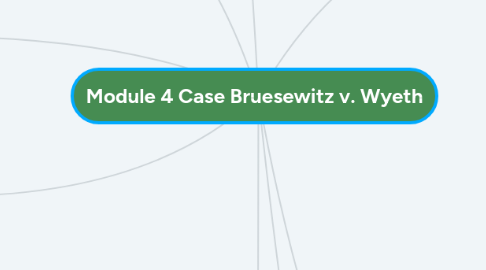
1. 8) Influence
1.1. Limited liability from vaccine manufacturers
1.2. Fewer vaccine lawsuites
2. 7) Importance
2.1. The ruling shields vaccine manufacturers from certain product liability lawsuits in state court that seek damages for serious health problems suffered
2.2. Provides drug manufacturers assurances that they won't be driven from the vaccine market from expensive litigation and lawsuites
3. 6) Impact
3.1. Thousands of pending claims before the vaccine court alleging that childhood vaccines caused autism
4. 5) Conclusion
4.1. The Court, in a 6-2 opinion affirmed laws that vaccine manufacturers are not liable for vaccine-induced injury or death if they are "accompanied by proper directions and warnings
4.2. The NCVIA preempted the Bruesewitzes’ claim against Wyeth for compensation for the injury to their daughter caused by the DTP vaccine’s side effects.
5. 4) Analysis/Application
5.1. Hannah Bruesewitz and family
5.1.1. Alleged that defective design of Lederle’s DTP vaccine caused Hannah’s disabilities in State Court
5.1.2. Claimed Lederle was subject to strict liability for negligent design, under Pennsylvania common law
5.1.3. The Bruesewitzes argued that the vaccine, which was developed in the 1940s, hadn’t been updated since, even while other companies had updated their DTP vaccines, and thus resulted in design defects that caused “avoidable” harm
5.1.4. Bruesewitzes argued, since Wyeth ultimately withdrew this version of Tri-Immunol from the U.S. market in 1998, Hannah’s injuries should be considered avoidable — the company could have made an earlier update and didn’t for financial reasons, they claimed
5.2. District Court
5.2.1. United States Court of Federal Claims
5.2.1.1. Petition was dismissed for failure to prove a link between the vaccine and Hannah's health problems.
5.2.2. Third Circuit Court of Appeals
5.2.2.1. Held that the claim was preempted by a section of the National Childhood Vaccine Injury Act of 1986
5.2.3. US Supreme Court
5.2.3.1. Held that the plaintiffs design defect claims were expressly preempted by the Vaccine Act.
5.2.3.1.1. Injury or death resulting from side effects may be unavoidable even though the vaccine was properly prepared and was accompanied by proper directions and warnings
5.3. NCVIA
5.3.1. The NCVIA had set up a nofault compensation program for persons injured by vaccines
5.3.1.1. Avoids costly tort litigation.
6. 1) Facts
6.1. Parties
6.1.1. Hannah Bruesewitz and family
6.1.2. Wyeth LLC - a subsidiary of Pfizer
6.1.3. State court in Pennsylvania
6.1.4. United States Court of Federal Claims
6.1.5. Third Circuit Court of Appeals
6.1.6. US Supreme Court
6.2. What Happened
6.2.1. Hannah Bruesewitz received Wyeth's Tri-Immunol DTP vaccine as part of childhood immunizations in 1992.
6.2.2. 2 hours after receiving injections, Hannah she started developing seizures and was hospitalized for weeks.
6.2.3. The Bruesewitzes claimed that Hannah's seizures and later developmental problems came from the vaccine
6.2.4. The Bruesewitzes filed suit in the "Vaccine Court", a special court within the United States Court of Federal Claims.
6.3. Procedural History
6.3.1. United States Court of Federal Claims dismissed claim for failure to prove a link between the vaccine and Hannah's health problems.
6.3.2. The Bruesewitzes proceeded to sue in Pennsylvania state court. The case was removed to the local federal court
6.3.3. Case was brought to US Supreme Court.
7. 2) Issues before the Court
7.1. If Wyeth LLC is protected by National Childhood Vaccine Injury Act from defect claims
7.2. If there was a link between the vaccine and Hannah's health problems
7.3. Can a federal law shield vaccine manufacturers from certain product liability lawsuits in state court that seek damages for serious health problems
8. 3) Rule of Law
8.1. Congress enacted the NCVIA in 1986
8.1.1. The Act establishes a no-fault compensation program designed to work faster and with greater ease than the civil tort system
8.1.2. A person injured by a vaccine, or his legal guardian, may file a petition for compensation in the United States Court of Federal Claims

